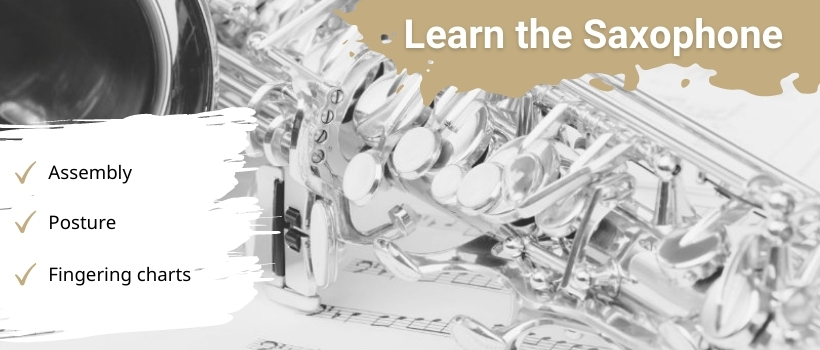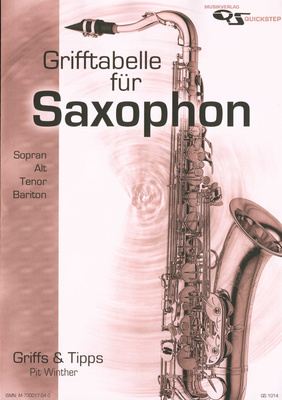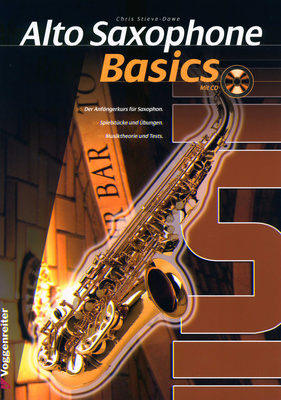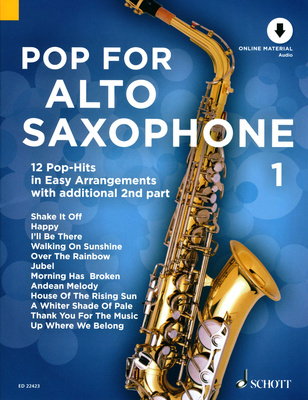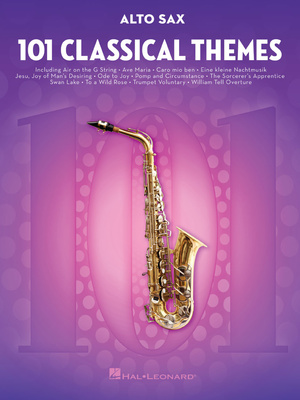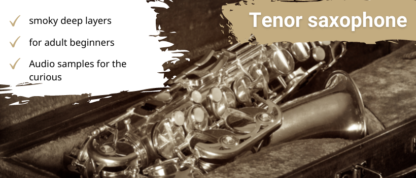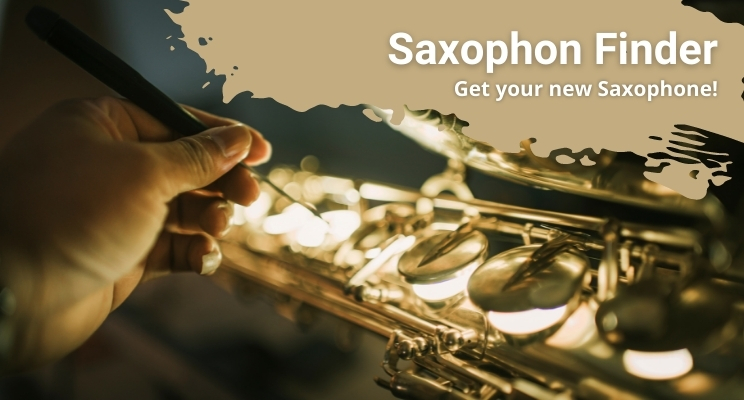You have finally bought or borrowed your own saxophone and want to take your first steps and learn the saxophone successfully – but where to start? Especially those who want to learn the instrument autodidactically will be overwhelmed at the beginning. How do you assemble the instrument? What do you have to pay attention to when attaching the reed? And how do you finally produce a sound with it? Questions upon questions arise – that’s why we try to give you a good overview of what needs to be done first.
Saxophone assembly: How to assemble the instrument correctly before playing it
Before you can start playing, you need to assemble the instrument properly. The parts you should now have are an instrument body, an neck, the mouthpiece, a reed, a matching reed screw and a strap. Here is a step-by-step guide:

- Take the leaf and moisten it a little with your tongue. When it is wet, it is easier to vibrate.
- Now place the reed with its smooth side on the also flat track of the mouthpiece. It should be positioned so that it is flush with the edge of the mouthpiece at the top. If it protrudes or does not quite reach, you will not be able to play well.
- Hold the blade in position and slide the blade screw over it. The screws should also be on the smooth underside. When everything is in place, tighten the screws so that nothing shifts during playing.
- The prepared mouthpiece is now placed on the neck. If the cork is dry or very new, you should first rub it with some cork grease. The smooth side of the mouthpiece with the screws is also on the bottom of the neck. The top of the neck is where the elongated octave key rests, the bottom is the bend underneath.
- Now put the padded side of the sling around your neck and attach the body of the saxophone to it. The carabiner of the sling is attached to a hook at the back of the saxophone.
- Now you don’t have to worry about the instrument slipping away when you attach the neck to the body with careful twisting movements. It is very important that the octave key, which has a hook-like extension at the bottom, is pushed over the connecting pin on the outside of the body. The connecting pin or the octave flap could be bent if the neck is put on too jerkily and such a repair is not favourable.
- Once the neck is in place, it is still easy to move it back and forth, so it should be aligned with the mouthpiece straight back and tightened on the screws at the junction of the body and the neck.
What is the correct saxophone posture?
First of all, familiarize yourself with all the keys of your instrument. Anyone who has played another wind instrument knows that the fingerings are very comparable. The left hand is placed on top, the index, middle and ring fingers rest on the mother-of-pearl covered keys. On the back is a small button on which you can rest your thumb as long as the octave key is not needed. The index, middle and ring fingers of the right hand rest on the pearl-covered keys. There is a thumb rest for the thumb on the back. This stabilizes the instrument.
Practising the Saxophone Embouchure
When learning the saxophone, the embouchure is the be-all and end-all. This refers to the way you put the mouthpiece in your mouth and, of course, how you tense the muscles around it in order to elicit a sound from the instrument. There are two variants: open (jazz embouchure) and the classical closed embouchure.
The closed saxophone embouchure
Traditionally, the mouthpiece is played closed, just like a clarinet. The incisors rest on top of the plastic of the mouthpiece about one centimetre from the edge, while the lower lip is slightly curled up and pressed against the reed with moderate pressure. Make sure that the lips are not too far forward or too far back on the reed, otherwise either no sound at all or a very tinny sound will be heard. The teeth of the lower jaw do not touch the reed, otherwise it cannot vibrate. This approach is usually easier for beginners, but in the long run it is exhausting and can rob the tone of its fullness.
The open saxophone approach
The more modern, open embouchure is also called the jazz embouchure, but it is useful for all styles of music because it produces a clear, powerful and unstrained sound. The incisors do not touch the mouthpiece because it is held by the upper lip. The lower lip lies loosely against the reed and should not pinch it off. The advantage of the embouchure is that the mouth is loose and relaxed overall, which favours an open, flowing air stream. Those who master the open embouchure well have less need to press the air and run less risk of developing a tinny or pressed-sounding tone. It certainly helps to test both approaches extensively and see what you personally feel more comfortable with.
Practising the saxophone tongue thrust
Just blowing into the instrument does not help much in the long run, even if it is a good breathing exercise to begin with to exhale as long as possible with a controlled “fffffffff”. With the saxophone, as with other woodwind instruments, you have to hold the reed with your tongue in addition to blowing in a controlled manner so that a stable tone can be released when you let go.
This is due to the inertia of the reed. If it is not held at the beginning, the reed vibrates sluggishly until the note is clearly there. Until then it sounds washed out, which we want to avoid stylistically and which is unfavourable in pieces in which the same note is to be played several times in succession. Therefore, the use of the tongue must be trained continuously. The best way to do this is to play and stop individual notes again and again or to practise them in scale sequences. The term ‘push’ does not have much to do with an actual push, because basically you let go of the reed, but as an image for the process, the term is certainly helpful.
The Saxophone fingering chart
Fingering charts are a wonderful tool in the beginning to gradually get to know all the notes and to internalise the fingerings. Later, of course, they are no longer needed, but those who have never held a saxophone in their hands will be grateful for the illustrated summary. There are free fingering charts on the net as well as compact summaries. Some people also like posters with fingering charts, as they make looking them up unnecessary. When choosing a fingering chart, bear in mind that the fingering differs according to the type of instrument. The fingerings for soprano and alto are therefore different. Summaries for all instruments are most convenient if you want to learn another key later.
Playing the first notes on the saxophone
Now that you know how to hold the instrument and have an idea of how the embouchure works in theory, you can start to play a first note. The easiest is G. To do this, close all three tone holes of the left hand, rest the right hand loosely without closing the keys, and balance the saxophone with your thumb. Practise striking the note again and again and hold it for a while. As soon as you have found a feeling for the tone production, you can start to play whole and half note values alternately. You control the flow of air with your abdominal muscles and the delineation of the individual notes with the push. Don’t be surprised if, after playing an instrument tuned to C, it sounds strange at first that a G doesn’t sound like the G you expect.
Playing the saxophone scale
You can gradually learn the saxophone by following the fingering chart and practising the notes in the following order (with increasing difficulty): G – A – B – C (high) and F – E – D – C. It is easier to practice the complete scale from top to bottom first. Once you have mastered it and can play it flawlessly up and down, you can add the octave key under your left thumb from the d” onwards to play the same scale an octave above. Since there are others besides the major scale, it makes sense to work through a beginner’s work with different scales and music-theoretical background knowledge.
Find saxophone sheet music
As soon as you have made a start and are comfortable on your instrument, you can begin to choose simple pieces for beginners. Of course, the easiest way is to buy a music booklet for beginners, as the pieces collected in it build on the learning success of the previous pages and train your playing skills in a targeted way. After all, you want to make learning the saxophone as easy as possible. A good first address is, of course, Thomann. But there are many mail-order companies which have thousands of music books for all pitches and genres, sometimes even rarer pieces that are not so easy to get hold of otherwise.
Here you can find saxophone sheet music for free
If you’re looking for something unusual or can’t afford to spend money on music books at first, but still want to learn the saxophone, there are some great addresses on the web where you can get free sheet music or playalongs to practice with.
You can always use the Happy Birthday Saxophone Sheet Music
It’s always up to date, you can use it every year and it’s great for beginners to rehearse: “Happy Birthday”! If you are just taking your first steps on the saxophone, you can make others happy and proudly present your first results.
Saxophone lessons

If you don’t trust yourself to learn on your own, there are numerous music schools and private music teachers in your area who can help you learn the saxophone either in private lessons or in group lessons with friends. You will get to know the instrument, get meaningful and varied exercises, learn the basics of music theory and can decide for yourself which musical direction you want to play.
Are there saxophone lessons online?
Of course! Compared to other instruments such as the clarinet, the trumpet or even more classical instruments, there are even quite a few online offers for the saxophone. That’s great, because online courses are of course much cheaper than individual lessons with a local music teacher. In addition, you have more flexible scheduling and you are no longer hindered by your job or other commitments from learning the saxophone as an adult. Plattforms like Skillshare offer multiple courses, from which you can choose what ist most suitable for you.
FAQ: Learning the saxophone
In principle, the saxophone is no more demanding than other instruments. Nevertheless, it takes time to master it well, because you have to invest a few hours of practice until the coordination on the instrument runs automatically, the sound comes cleanly, notes can be played fluently from the reed and the ear is trained so that intonation difficulties of the instrument can be compensated by the embouchure. But in principle, none of this is difficult and with regular practice and a good teacher, you will master all the hurdles.
Yes, the saxophone is a great instrument for beginners. It is already being learned by school children in wind classes, is easy to handle and offers a wide range of expressive possibilities on which to build musically. It can be used to play both classical and more modern pieces, and it is precisely because of this versatility that it is a highly popular instrument.
In principle, it is possible to learn the saxophone autodidactically, but this requires some discipline, enjoyment of research and good introductory literature to have the basics flush together. If private lessons with a teacher are too expensive, online offers can also help to take the first steps under guidance.





